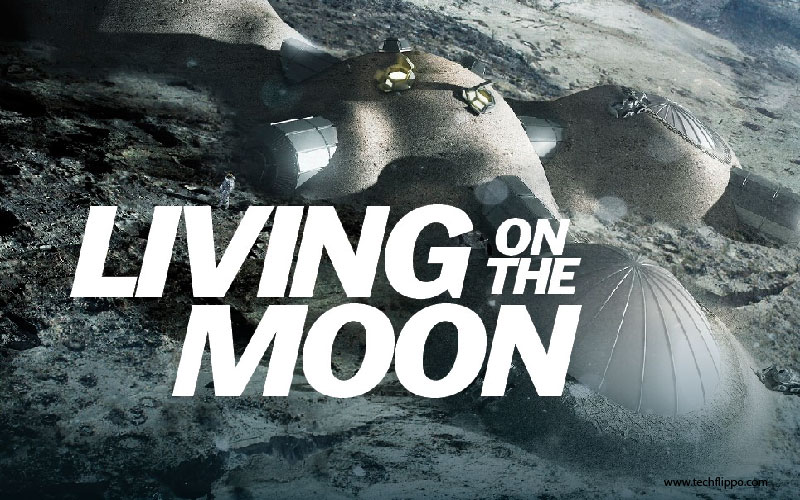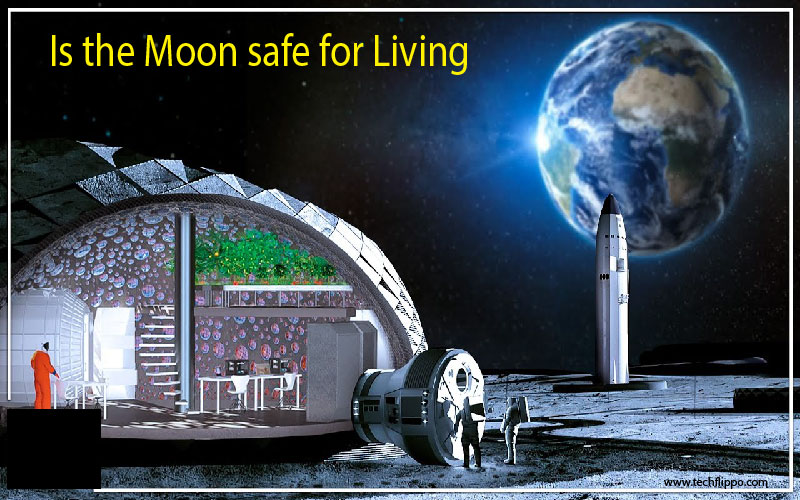Is the Moon safe for Living ?
The Moon has long captured our imagination. From ancient myths to modern space exploration, it has been a source of wonder and curiosity. But as we look to the stars for new frontiers, one question arises: Is the Moon safe for living? With advancements in technology and a renewed interest in lunar colonization, humanity is closer than ever to making this celestial body a second home. Yet, the challenges are immense and complex. Join us as we explore what it would mean to live on the Moon—its history, potential hurdles, benefits, and ethical considerations that accompany such an extraordinary venture.

Current technology and advancements for living on the Moon
Advancements in technology are paving the way for lunar habitation. Companies and space agencies are exploring innovative solutions to create a sustainable living environment on the Moon.
Habitat modules designed for extreme conditions have been developed. These structures will shield inhabitants from harsh temperatures and radiation. Many prototypes utilize materials sourced directly from lunar regolith, reducing reliance on Earth-bound supplies.
Robotic systems play a crucial role as well. They can perform construction tasks, assemble habitats, and even assist with resource extraction without risking human life initially.
Life support technologies are evolving too. Closed-loop systems recycle air and water efficiently, enabling long-term stays without constant resupply missions.
Furthermore, advancements in propulsion technology make travel to the Moon more feasible than ever before. This progress opens up new possibilities for both research and eventual colonization efforts by humanity.
The potential challenges of living on the Moon
Living on the Moon presents a series of formidable challenges. The lack of atmosphere means exposure to cosmic radiation is a significant concern for future inhabitants. Without adequate shielding, long-term health risks could skyrocket.
Gravity on the Moon is only one-sixth that of Earth’s. This reduced gravity can affect human physiology in ways we are still studying. Muscle atrophy and bone density loss may become serious issues over time.
Resource availability also poses a major hurdle. Water, crucial for survival, exists mainly as ice in shadowed craters. Extracting and utilizing it efficiently will require innovative technologies.
Additionally, temperature fluctuations on the lunar surface can be extreme—ranging from blistering heat during the day to frigid cold at night. Building habitats that can withstand these conditions is essential but technologically demanding.
Isolation and psychological effects cannot be overlooked when considering long-term habitation far from home.
Considerations for establishing a sustainable colony on the Moon
Establishing a sustainable colony on the Moon involves careful planning and innovation. One of the primary considerations is resource utilization. Harnessing lunar materials, like regolith, can significantly reduce the need for transporting supplies from Earth.
Energy sources are crucial as well. Solar power appears to be a promising option due to the Moon’s long days. However, energy storage systems must be developed for use during extended nights.
Life support systems require advanced technology to recycle air and water efficiently. This ensures that inhabitants can thrive without constant resupply missions.
Moreover, habitat design needs to prioritize safety and comfort in an environment filled with radiation and extreme temperatures. Utilizing underground structures could provide natural shielding against these hazards.
Fostering community among colonists will play a vital role in psychological well-being. Building social connections may help mitigate isolation experienced by those living far from Earth.

Benefits and opportunities of living on the Moon
Living on the Moon opens up a realm of possibilities for scientific discovery. Researchers can conduct experiments in low gravity, examining phenomena that are impossible to replicate on Earth.
The Moon is rich in resources such as helium-3. This isotope could potentially fuel nuclear fusion, offering a clean energy source for future generations. Tapping into these materials might revolutionize our energy landscape.
Establishing a lunar colony can also spur advancements in technology. Innovations born from necessity often lead to breakthroughs that benefit life back at home.
Additionally, colonizing the Moon fosters international collaboration. Countries will need to work together, promoting peace and unity beyond terrestrial borders.
Tourism could flourish too. Imagine lunar vacations where people experience breathtaking views of Earth rising over the horizon or stroll along its cratered surface—an adventure unlike any other!
Ethical concerns and regulations for lunar living
As humanity looks towards the Moon for potential habitation, ethical concerns emerge. The lunar environment is pristine and unique. Rushing to establish colonies could lead to irreversible damage.
Regulations are necessary to prevent exploitation of resources. The Outer Space Treaty emphasizes that space should be used for peaceful purposes. However, enforcement remains a challenge in this uncharted territory.
Cultural implications also arise; who owns the Moon? Nations and corporations may clash over territorial claims and resource rights. Establishing clear guidelines becomes essential in maintaining fairness.
Equity in access must be considered too. Will opportunities on the Moon benefit all of humankind or just a select few? Inclusivity should guide our approach as we venture into this new realm.
Furthermore, safety protocols need definition. Protecting human life is paramount, but how do we ensure it amidst uncertainty? Balancing innovation with responsibility will shape our lunar future.
Conclusion: Is the Moon safe for living?
The question of whether the Moon is safe for living invites a complex exploration. The Moon has fascinated humanity for centuries, and our technological advancements have brought us closer to potential lunar habitation than ever before. With ongoing research and missions aimed at establishing human presence on the Moon, we are uncovering both possibilities and challenges.
Living on the Moon poses unique hurdles. Radiation exposure, extreme temperatures, and lack of atmosphere present significant risks that need thorough investigation. Addressing these issues requires innovative engineering solutions to create safe habitats that can protect future inhabitants.
Sustainability will be key in any lunar colony’s success. Efficient use of resources such as water ice found in permanently shadowed craters could support life while minimizing supply needs from Earth. Establishing agricultural systems capable of thriving in low gravity offers another layer of sustainability.
Despite the challenges, many benefits come with living on the Moon. Scientific research opportunities abound; studying lunar geology may unlock secrets about Earth’s history or even provide insights into Mars exploration efforts. Economic prospects also exist—mineral extraction could become a new frontier.
Ethical concerns must not be overlooked either; governance structures need forming to regulate activities on this celestial body, ensuring that space remains accessible and beneficial for all humankind rather than dominated by individual interests.
As we weigh these factors together, it becomes clear that safety is relative when considering life beyond Earth’s confines. Living on the Moon holds promise but demands careful consideration regarding its long-term viability and ethical implications surrounding extraterrestrial colonization.